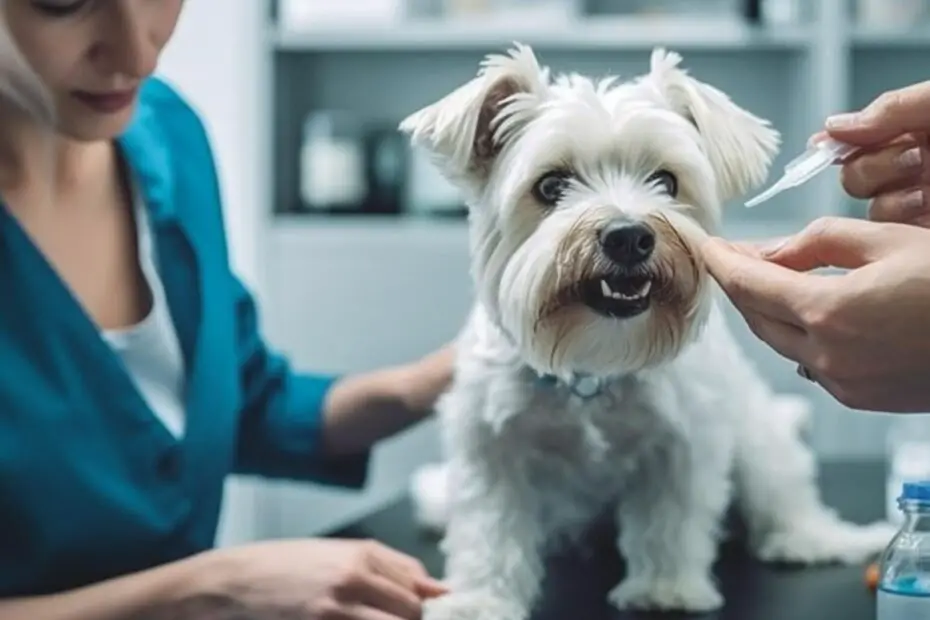Pets are beloved members of our families, and their well-being is of paramount importance. Just as we have first aid kits for ourselves, it’s equally essential to have a pet first aid kit on hand to address any injuries or medical emergencies that may arise. In this blog, we will explore the pet first aid kit essentials and why being prepared for emergencies is crucial for your furry friends.
You may also want to read about pet-proofing your home.
The Importance of a Pet First Aid Kit
Accidents can happen at any time, and pets are not immune to injuries or sudden illnesses. Having a well-equipped pet first aid kit readily available can make a significant difference in the outcome of an emergency. Here’s why it’s essential:
1. Immediate Response
In an emergency, time is of the essence. A properly stocked pet first aid kit allows you to provide immediate care and stabilize your pet’s condition until you can seek professional veterinary help.

2. Prevent Further Injury
Administering basic first aid can help prevent further injury or complications. Prompt action can minimize pain and suffering for your pet.
3. Peace of Mind
Knowing that you have the tools and supplies needed to care for your pet during an emergency can provide peace of mind. It allows you to stay calm and focused when your pet needs you the most.
4. Support During Natural Disasters
In the event of a natural disaster or evacuation, having a pet first aid kit packed and ready to go ensures that your pet’s health and safety are not compromised during stressful situations.
5. Travel Preparedness
If you travel with your pet, a portable first aid kit is essential. It can come in handy whether you’re on a road trip, hiking, camping, or simply spending time outdoors with your furry companion.
Pet First Aid Kit Essentials
Creating a pet first aid kit is a simple but crucial task. You can purchase pre-made kits or assemble one yourself. Here are the essential items to include in your pet first aid kit:
1. First Aid Manual
A pet-specific first aid manual or guidebook is essential. It provides step-by-step instructions on how to assess and respond to various pet emergencies.
2. Contact Information
Include contact information for your veterinarian, an emergency veterinary clinic, and a poison control hotline. Save these numbers on your phone as well for easy access.
3. Gauze Pads and Bandages
Sterile gauze pads, adhesive bandages, and self-adhesive bandage wraps are essential for covering wounds and controlling bleeding.
4. Adhesive Tape
Medical tape can be used to secure bandages and gauze in place.
5. Scissors
Scissors with blunt tips are useful for safely cutting fur and bandages.
6. Tweezers
Tweezers can help remove splinters, ticks, or other foreign objects from your pet’s skin.
7. Digital Thermometer
A digital thermometer designed for pets allows you to monitor your pet’s temperature. The normal range for dogs is 100.5°F to 102.5°F (38°C to 39.2°C) and for cats is 100.5°F to 102.5°F (38°C to 39.2°C).
8. Disposable Gloves
Disposable gloves are essential for preventing the spread of infection and protecting yourself when administering first aid.
9. Antiseptic Wipes or Solution
Antiseptic wipes or a solution like hydrogen peroxide can be used to clean wounds and prevent infection.
10. Hydrocortisone Cream
Hydrocortisone cream can help relieve itching and inflammation from insect bites or skin irritations.
11. Eyewash Solution
An eyewash solution is useful for flushing debris or irritants from your pet’s eyes.
12. Cotton Balls and Swabs
Cotton balls and swabs can be used for cleaning wounds, applying ointments, or removing debris from ears or eyes.
13. Sterile Saline Solution
Sterile saline solution can be used for flushing wounds and cleaning sensitive areas like eyes and ears.
14. Muzzle or Fabric Strips
In an emergency, even the gentlest pet may become agitated or scared. A muzzle or fabric strips can help prevent bites while providing necessary care.
15. Blanket or Towel
A blanket or towel can be used for warmth, comfort, and restraint during first aid procedures.
16. Splint Material
In case of a suspected fracture, you may need splint material, such as a rolled-up newspaper or a wooden board, to immobilize the injured limb.

17. Emergency Food and Water
Pack a small supply of your pet’s food and water in sealed containers. These provisions can be crucial during unexpected situations or while traveling.
18. Medications
Include any prescribed medications your pet may need, along with dosing instructions. Ensure that these medications are within their expiration dates.
19. Extra Leash and Collar
An extra leash and collar can be helpful if your pet’s current ones become damaged or lost.
20. Pet Carrier or Crate
If your pet requires transportation during an emergency, a carrier or crate provides a secure and comfortable way to transport them.
Additional Items for Specific Needs
Depending on your pet’s specific needs and health conditions, you may need to include additional items in your first aid kit. These could include:
- Allergy medications
- Prescription medications
- Specialized wound dressings
- Eye drops or ointments
- Nail clippers
- Rectal thermometer
- Pet-specific CPR mask
Maintaining Your Pet First Aid Kit
Creating a pet first aid kit is just the first step; it’s equally important to keep it up to date and well-maintained. Here’s how to ensure that your kit is always ready for action:
1. Regularly Check Expiration Dates
Many items in your first aid kit have expiration dates. Check these dates regularly and replace any expired items promptly.
2. Replace Used or Missing Items
If you use any items from your first aid kit or notice that something is missing, replace them immediately to ensure that your kit remains complete and functional.
3. Review and Refresh Your Skills
Even the best-equipped first aid kit is only as useful as your knowledge and skills. Periodically review pet first aid procedures and practice them to stay prepared for emergencies.
4. Update Contact Information
If your veterinarian’s contact information changes, be sure to update it in your first aid kit. Likewise, ensure that emergency contact numbers are accurate and up to date.
5. Customize for Your Pet’s Needs
As your pet’s needs change, make adjustments to your first aid kit accordingly. For example, if your pet develops a chronic condition, add any necessary medications or supplies.
Basic First Aid Procedures
In addition to having the right supplies, it’s essential to know how to perform basic first aid procedures for pets. Here are some common pet first aid procedures:
1. CPR (Cardiopulmonary Resuscitation)
Learn how to perform CPR on pets in case of cardiac arrest. It involves chest compressions and rescue breaths. Pet-specific CPR classes are available and highly recommended.
2. Choking
Know how to perform the Heimlich maneuver for pets if they are choking. This procedure can dislodge obstructions from the airway.
3. Bleeding Control
Learn how to control bleeding by applying direct pressure with sterile gauze or a clean cloth. Elevate the injured limb if possible.
4. Wound Cleaning
Clean wounds with antiseptic wipes or saline solution to prevent infection. Apply an antiseptic ointment or cream if available.
5. Splinting
If you suspect a fracture, immobilize the injured limb using a splint or improvised materials like rolled-up newspaper or a wooden board.
6. Eye Irritation
Flush the eyes with sterile saline solution or eyewash solution to remove debris or irritants. Do not rub the eyes.
7. Seizures
During a seizure, move objects away from your pet to prevent injury. Keep your pet safe and monitor the duration of the seizure.
8. Burns
For burns, cool the affected area with cold water. Do not use ice. Cover the burn with a sterile bandage or non-stick dressing.
9. Poisoning
If you suspect poisoning, contact a poison control hotline or your veterinarian immediately. Be prepared to provide information on the ingested substance.
When to Seek Professional Veterinary Care
While a pet first aid kit can address many minor injuries and provide temporary relief, it’s crucial to recognize when professional veterinary care is necessary. You should seek immediate veterinary attention for the following situations:
- Severe bleeding that cannot be controlled
- Broken bones or suspected fractures
- Difficulty breathing or choking that does not resolve
- Unconsciousness
- Seizures lasting longer than five minutes or multiple seizures
- Ingestion of toxic substances
- Burns covering a large area or involving the face or genitals
- Signs of shock, such as pale gums, rapid breathing, or a weak pulse
- Inability to urinate or defecate
- Prolonged vomiting or diarrhea
- Severe abdominal pain or bloating
- Eye injuries or sudden loss of vision
- Lacerations or wounds that are deep, jagged, or gaping
- Any situation where you are unsure of what to do
Conclusion to Pet First Aid Kit Essentials
A well-prepared pet first aid kit is a vital tool for every pet owner. It provides immediate assistance during emergencies, giving your pet the best chance of a positive outcome. In addition to assembling a comprehensive first aid kit, it’s essential to educate yourself on pet first aid procedures and keep your knowledge up to date. Remember that while a pet first aid kit can address many issues, professional veterinary care is always the best option for more severe injuries or illnesses.
By being prepared and having the necessary supplies and skills, you can ensure that your furry friends receive the care they need in times of crisis, fostering a safe and loving environment for your beloved pets.
